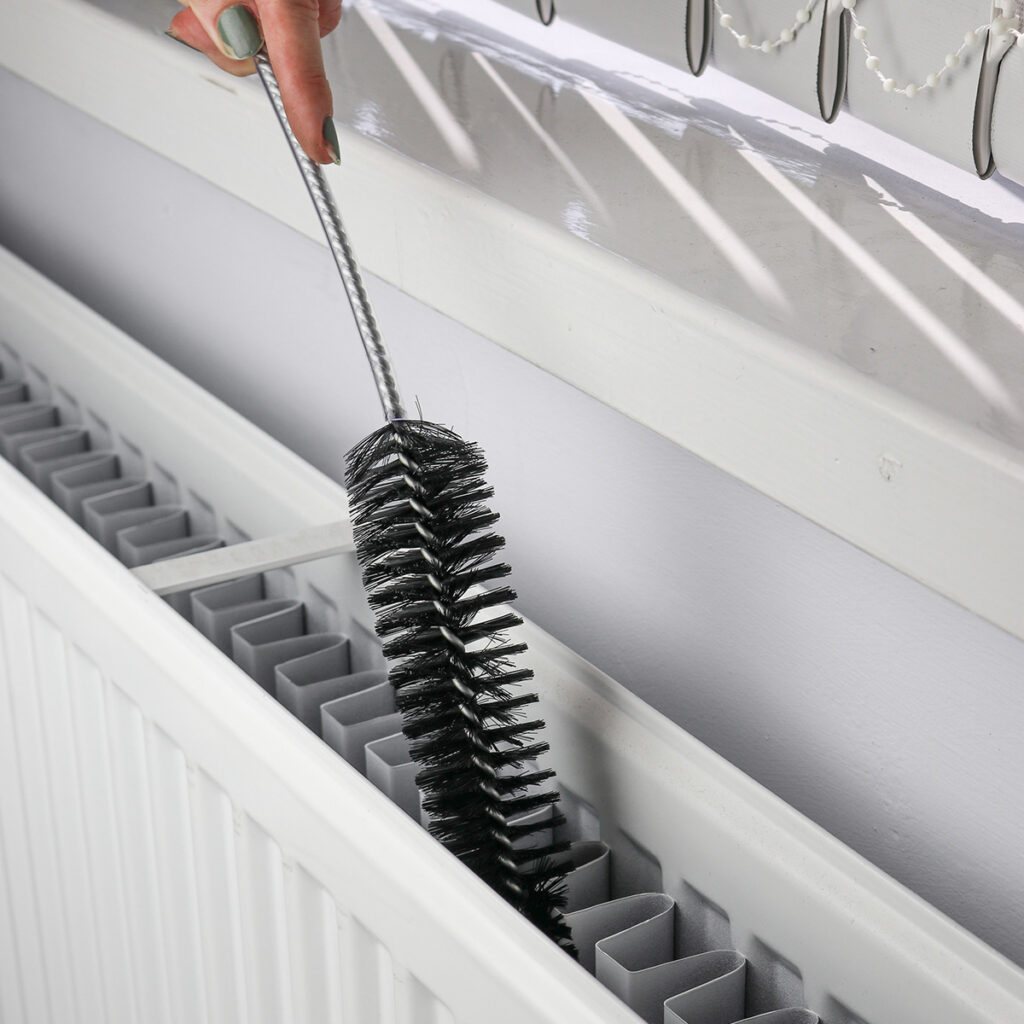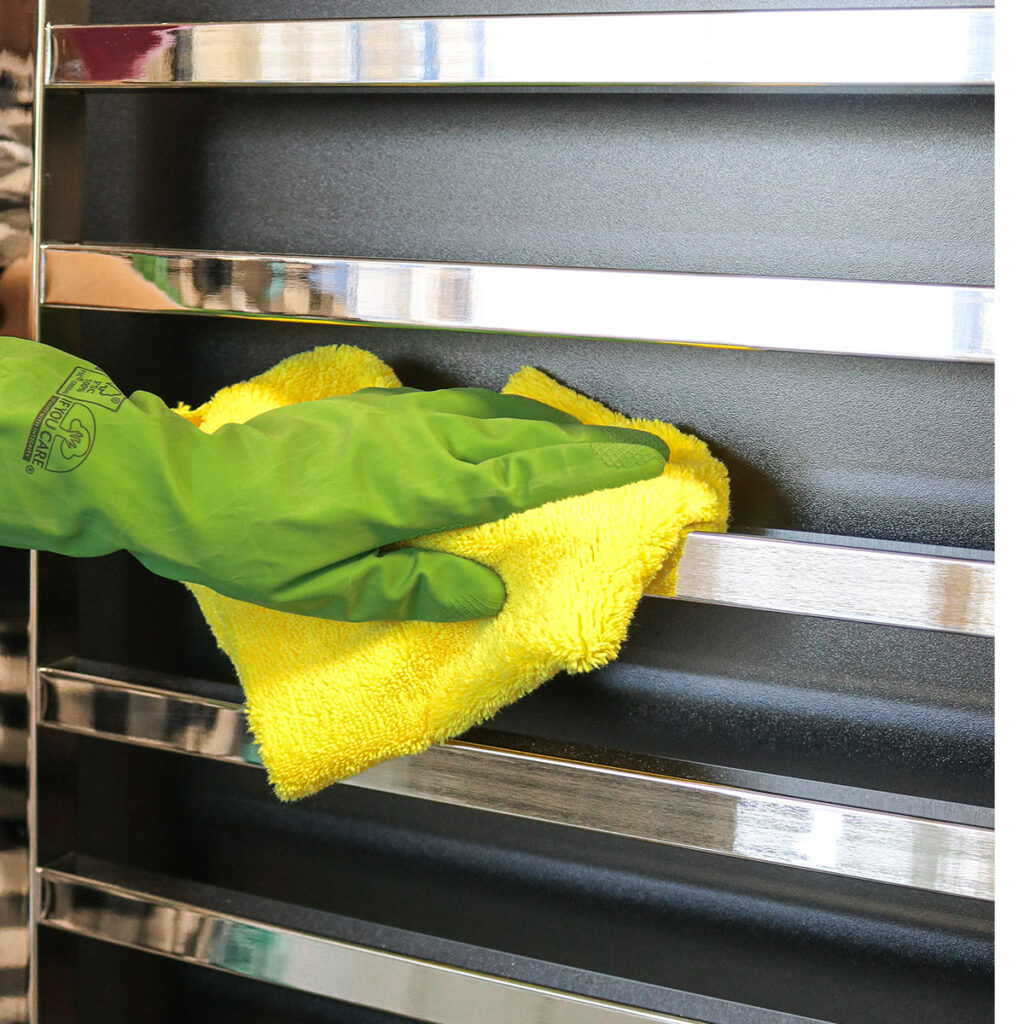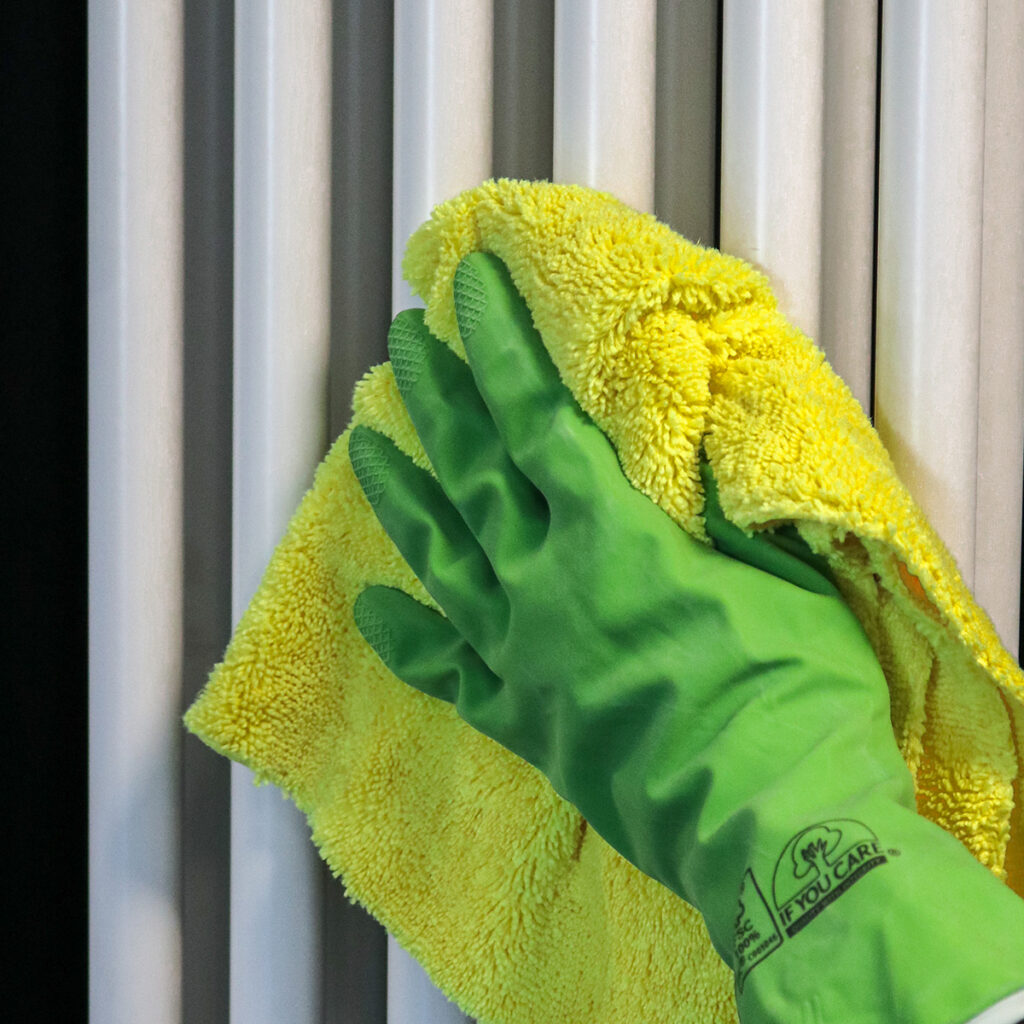With energy bills increasing, the maintenance of your heating system including the cleaning of radiators and heated towel rails, is becoming increasingly important to keep heating costs down and your system working efficiently.
One thing that most of us overlook when the cooler months are approaching, is the upkeep of our heating system. If everything is running smoothly and you are being kept warm and cosy you probably take the view ‘if it ain’t broke, don’t fix it.’
But, dust and dirt create a layer of insulation on your radiators and towel rails which reduces the heat emission and therefore their efficiency. This results in your radiators having to work much harder to heat an area, and because the area does not feel as warm as it should, you turn the heat up thus pushing your energy costs even higher.
Here’s an easy guide on how to clean your radiators and towel rails
Before you start cleaning, turn your heating off and make sure that all the radiators and towel rails are cold.
Using your vacuum cleaner, Hoover as much dust from the radiator as possible, the outside, the wall behind the radiator and underneath. With a convector radiator, you will need to pay special attention when cleaning between the fins as the majority of the heat is emitted via the convectors. A convector radiator is made up of a panel being the convector with metal fins, or panels that sandwich metal fins (see image below).
If your radiator has a top lid, you will be able to lift this off to expose the fins and vacuum between them. Don’t worry if you can’t reach everywhere, we will be using a radiator brush and a hairdryer in the next few steps.

Using a radiator brush you should be able to reach all of the nooks and crannies. If you do not have a radiator brush you can make your own DIY duster. Use a long piece of wire or a straightened wire hanger and fix a duster to one end… you now have the ideal radiator duster. With your duster or brush you should now be able to clean the full depth of your radiator and in-between the bars of tall column radiators.
For the very stubborn dust collection areas, a hairdryer is a trusty tool. Simply blow cool air down through the middle of your radiator. When the inside of the radiator is clean, you can concentrate on the outside.
Put your rubber gloves on and use a nonabrasive cloth or sponge, soaked in warm water with washing up liquid. Clean the outside of your radiator or towel rail, pipe work and valves, making sure that you remove all of the dust residue and stubborn dirt.
Your radiators and towel rails are now clean and will emit more heat.


Boost the heat output of your radiators
You can lose around a third of heat from a radiator on an external wall, and possibly more if your external wall is a solid wall and not an insulated cavity wall. One easy way to boost the British Thermal Unit (BTU) heat output of your radiator is to use radiator heat reflector foil. The foil is insulated and specially treated against mold and moisture, and it reflects the heat back into the room. The foil can be purchased from DIY retailers and online stores.
Simply measure in-between the radiator mounting brackets, cut the foil to size and stick it to the back of your radiator. It only takes a few minutes and you will certainly notice the heat difference and you’ll be saving your pennies.
You’ll not see an instant saving on your energy bills, but in time, with regular maintenance of your heating system and the cleaning of your radiators, not just before the winter months, you will make a considerable saving on the cost of heating your home or commercial property.
